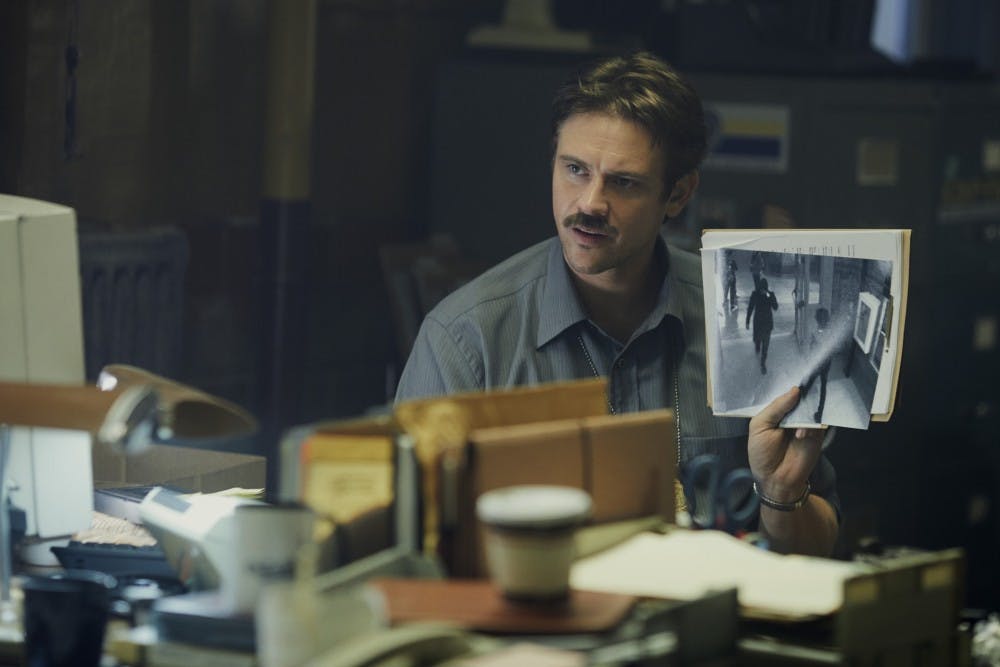It may not even be October yet, but Netflix already has Halloween on its mind. Recently, Netflix teased a handful of new thriller originals that are being released every Friday throughout the next month. They’re a part of Netflix’s advertisement for a new genre titled “Netflix and Chills”: a name based on the long–dead euphemism. Netflix is now fully targeting thriller and horror audiences, hoping to lure in both younger and older watchers by offering up originals to be watched alongside beloved classics. In the Shadow of the Moon is the first of the new “Netflix and Chills” originals to be added to the genre. Next Friday, we get In the Tall Grass.
Judging from the trailer of In the Shadow of the Moon, the movie could’ve easily fallen prey to a glaring failure that many sci–fi movies end up suffering from: overzealousness, in a way that brings in a lot of high–potential plot and character elements, but fails to expand upon any of them. And in some ways, the movie does fail—but it’s also unexpectedly entertaining.
In the Shadow of the Moon follows Philadelphia police officer Thomas Lockhart (Boyd Holbrook) as he pursues a woman (Cleopatra Coleman) who strikes the city every nine years, killing off seemingly–unrelated individuals in the same way every time: with a through–the–nape injection that disintegrates the brain and causes blood to drip out of the victims’ facial orifices. Over the next three decades that the movie time–skips through, Lockhart becomes more and more unraveled, sacrificing his relationships with his daughter and brother–in–law to decode the mystery of the woman and her actions.

Photo by Sabrina Lantos | Netflix
The good parts of In the Shadow of the Moon are loud and mindless—car chases through small, dark Philadelphia streets, and the mystery woman effortlessly fighting off police officers in hand–to–hand combat. Movement in the movie is realistic and fluid, with Lockhart’s partner Maddox (Bokeem Woodbine) developing an uneven gait after having his leg broken and Lockhart himself showcasing his deteriorated sprinting ability in numerous shots, throughout several decades. As an action film, In the Shadow of the Moon is glorious, and even features a long, gorgeous shot of a bloated Lockhart slow–moving in water after having been pushed out of a low–flying plane.
But just as Lockhart falls apart throughout his years of searching for the mystery woman, so does the film itself when analyzed beyond its shock–value gore and cold color palette. Character–development–wise, In the Shadow of the Moon is still shockingly commendable: we watch Lockhart lose his job and become ever–more disheveled as the years go on, and his relationships with the last family he has left (his daughter and his brother–in–law) begin to fray. Scenes that highlight Lockhart’s isolation and supposed insanity are tear–filled and quiet, with plenty of time given to showcasing each party's expressions of sorrow and anger, which are always directed towards Lockhart.
The same cannot be said of the movie’s plot. It has a buildable, if not trope–y, premise: killer kills in mysterious ways, police try to figure out the killer’s motives and motivations. In the Shadow of the Moon also throws in time travel, racial and social tensions, and a man’s battle with grief (Spoilers ahead!). This is all revealed once Lockhart is finally able to decode the mystery of the woman, her mission, and his own role in the story. Her name is Rya and she’s his grandchild, sent back in time by Lockhart himself, to kill off the roots of a 2024 civil war started by founders and perpetrators of a white power movement. Watching with a friend, it’s entertaining to pick up on small details that reveal bits of the plot before everything is spelled out in the end, but on a whole, the plot is difficult to become too invested in and often is thrown at the viewer through bland, spoken exposition. Sure, the latter makes the plot easier to understand, but it plays like a video game made up of cut–scenes and one–dimensional characters.

Photo by Sabrina Lantos | Netflix
Amid the ups and downs of the plot, the heavy acknowledgement of racial and social tensions in the film also should be addressed. Within the first 45 minutes of the movie, we see protests happening in Philadelphia against a white policeman’s killing of an unnamed black woman, and a young partier’s remarks about how “she was in the wrong neighborhood.” And of course, the whole plot of the movie winds up being about preventing a racial civil war sparked by white supremacists.
In the Shadow of the Moon says a lot of things, like the idea that every individual plays a role in a bigger plot (Lockhart’s seemingly futile struggles throughout the movie are what fuel the plot). In regards to social commentary, it offers up, “violent white power is bad and should be destroyed at the root.” Nothing more, nothing less. I suppose you can take from a Netflix action/mystery original what you want, but investing a plot so heavily in these issues and acknowledging them so off–handedly is confusing and disappointing. Granted, an approximately equal amount of time is allotted to each of the plot’s big twists and themes, but perhaps the movie could have said more by saying less—cutting out some of its extra sci–fi fluff in favor of more meaningful substance.
In the Shadow of the Moon is entertaining. It’s action–packed, bloody, heart–wrenching, and messy, although it doesn’t offer much in terms of cult–classic genius or hard–hitting commentary. It’s an enjoyable Friday–night–in Netflix movie to watch with some friends. Plus, it’s set in Philadelphia, so if you're not too big on mystery thrillers, there’s the added bonus of evaluating how accurately director Jim Mickle portrayed our city.

